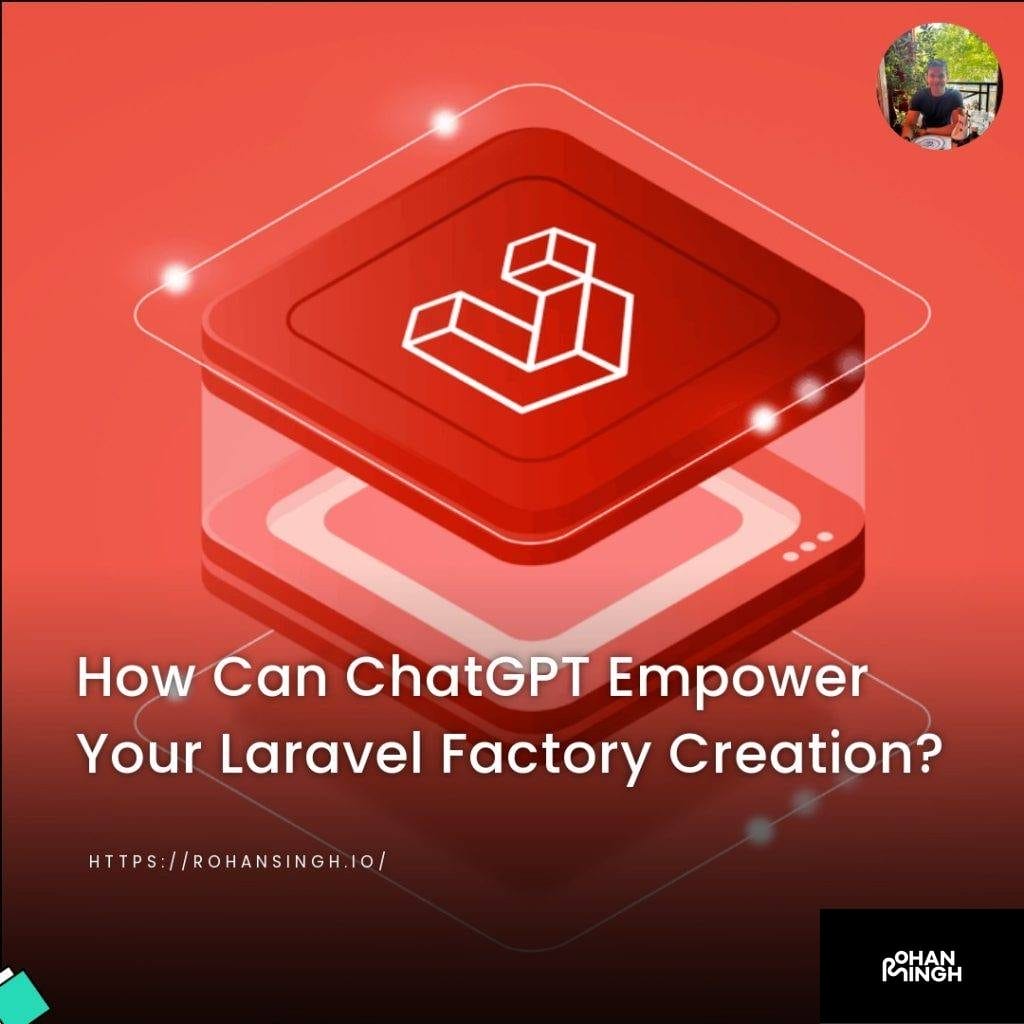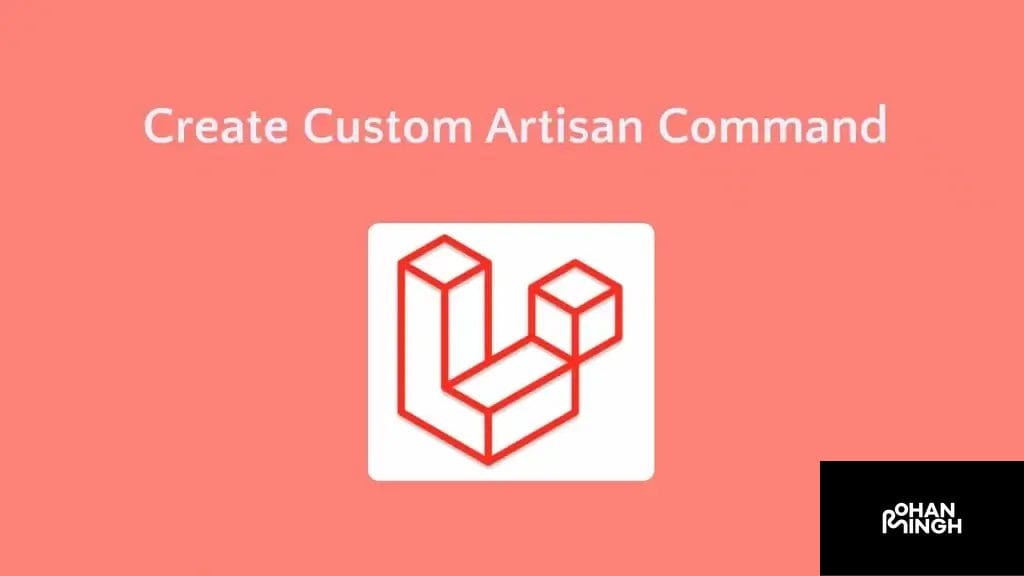How Can ChatGPT Empower Your Laravel Factory Creation?

What is Laravel Factories?
Laravel Factories are a powerful feature in the Laravel framework that streamline the process of generating fake data for testing and development purposes. They provide a convenient way to create dummy records in the database, allowing developers to simulate real-world scenarios without the need for actual data. Laravel Factories make it easier to generate large sets of data quickly and efficiently, providing a smooth sailing experience during the development process. With the help of ChatGPT, developers can now leverage the power of natural language processing to generate Laravel Factories seamlessly. By using AI-powered language models like ChatGPT, developers can generate accurate and coherent responses for various prompts related to Laravel Factories, making it a valuable tool for building Laravel applications. Laravel Factories, combined with AI technology, open up new possibilities for developers, bringing efficiency and accuracy to the development process.
Table of Contents
ToggleWhat is ChatGPT?
ChatGPT is an AI-powered language model that leverages natural language processing to facilitate conversational communication. It employs cutting-edge technology based on GPT-3.5, which has been trained on an extensive corpus of diverse text data. ChatGPT is widely recognized for its ability to generate dynamic responses that are coherent, context-sensitive, and cater to the user’s specific needs.
One of the standout features of ChatGPT is its capability to engage in conversational dialogue, allowing users to interact with it as if they were conversing with a real person. This makes it an invaluable tool for building chatbot applications, as it can provide accurate responses in real-time.
In addition to its conversational abilities, ChatGPT also excels at providing comparative data and ranking-based responses. For example, it can analyze multiple options or products and offer insights on their pros and cons, helping users make informed decisions.
By utilizing ChatGPT, developers can enhance their applications with sophisticated language generation capabilities. Its versatility and functionality make it a valuable asset for a wide range of applications, from language translation to content creation.
Let's talk about your future project!
Eager to collaborate on your upcoming endeavor? Let's explore and ignite the potential of your next big idea, shaping a promising future together!
Setting up your Environment
Install Dependencies
Installing dependencies for a Laravel project is a crucial step to ensure the smooth execution of the project. To begin, open your command line interface and run the following command:
“`
composer require openai-php/client guzzlehttp/guzzle
“`
This command will install the necessary dependencies – the OpenAI Client and Guzzle HTTP – required for integrating the Laravel project with the OpenAI language model.
After the installation, you need to add your OpenAI API key to the configuration file. Navigate to the configuration file of your Laravel project, usually located at `config/openai.php`, and add the API key under the ‘open_ai’ section.
By following these steps, you will have successfully installed the dependencies required for your Laravel project to interact with OpenAI’s powerful language model. With the OpenAI Client and Guzzle HTTP in place, you can leverage the capabilities of chatGPT to generate Laravel factories and enhance your development process.

Set Up a Database Table
To set up a database table in Laravel, you can create a SQLite database. Follow these steps to get started:
1. Begin by creating an empty SQLite file within the “database” directory of your Laravel application. You can do this manually or by using the command-line interface.
2. Update the `.env` configuration file to use Laravel’s SQLite database driver. Open the `.env` file located in the root directory of your Laravel application and look for the `DB_CONNECTION` variable. Set its value to `sqlite`.
3. Next, specify the path to the SQLite database file in the `DB_DATABASE` variable of the `.env` file. For example, if you created the SQLite file in the `database` directory with the name `database.sqlite`, the value would be `database/database.sqlite`.
4. Lastly, run the application’s database migrations using the `php artisan migrate` command. This will create the necessary database tables based on the migration files defined in the `database/migrations` directory.
By following these steps, you can easily set up a database table in Laravel using a SQLite database.
Create a Memory SQLite Database for ChatGPT
Creating a Memory SQLite Database for ChatGPT can greatly facilitate the generation of Laravel factories. A memory SQLite database is a temporary database that resides in the system’s memory rather than being stored on disk. This type of database is perfect for storing the generated seed data.
To set up and configure the memory SQLite database, begin by creating an empty SQLite file within the “database” directory of your Laravel application. You can do this either manually or through the command-line interface.
Next, update the `.env` configuration file to use Laravel’s SQLite database driver. Locate the `DB_CONNECTION` variable in the `.env` file and set its value to `sqlite`.
Specify the path to the SQLite database file in the `DB_DATABASE` variable of the `.env` file. For example, if the SQLite file is created in the `database` directory with the name `database.sqlite`, set the value to `database/database.sqlite`.
After configuring the memory SQLite database, run the command `php artisan migrate` in your terminal to execute the application’s database migrations. This will create the necessary database tables based on the migration files defined in the `database/migrations` directory.
By setting up and configuring a memory SQLite database, you can generate Laravel factories for your ChatGPT application smoothly, ensuring efficient utilization of resources.
Generating Factories with ChatGPT
Generating Laravel factories is a crucial aspect of building robust web applications. Laravel, a popular PHP-based technology, provides powerful tools and features to streamline the development process. With the help of ChatGPT, an AI-powered language model, you can enhance your experience in generating Laravel factories. In this blog post, we will explore how ChatGPT can assist in generating Laravel factories efficiently and accurately. We will discuss the steps involved in setting up and configuring the memory SQLite database, and how to use Laravel’s built-in artisan commands to create database tables. Additionally, we will highlight the benefits of utilizing ChatGPT for generating factories and how it can enhance your workflow as a Laravel developer. So let’s dive in and discover the seamless process of generating Laravel factories with the assistance of ChatGPT.

Defining the Public Function Definition
Defining the public function definition for generating Laravel factories using ChatGPT is a crucial step in building the technology stack. With the power of ChatGPT, an AI-powered language model, developers can automate the process of creating Laravel factories efficiently.
The public function definition serves as a blueprint for generating the factories that help populate database tables with test data. It acts as a bridge between the actual classes and the database, enabling smooth sailing of data creation and testing.
To define the public function definition for Laravel factories, follow these key steps:
1. Begin by utilizing the built-in artisan commands of Laravel, such as “php artisan make:factory”.
2. Generate the factory file with the necessary configuration using the command. This file is responsible for defining the factory’s structure and attributes.
3. Define the public function within the factory, specifying the model class to link the factory with the database table.
4. Inside the public function, you can use ChatGPT’s capabilities to generate coherent and accurate responses. This can involve generating random data, applying natural language processing, or even language translation.
5. Customize the response format based on the specific needs of your application and database structure.
By leveraging ChatGPT, Laravel developers can streamline the process of generating Laravel factories, enabling efficient data population and facilitating testing. It’s a powerful combination of the Laravel framework and AI-driven language generation, offering a wide range of possibilities for developers, from absolute beginners to seasoned professionals.
Building the Technology Stack: Python and PHP-Based Technology
Building the technology stack for generating Laravel factories involves leveraging the power of both Python and PHP-based technology. These two technologies work together seamlessly to create efficient and effective factories for populating database tables with test data.
Python, a versatile programming language, plays a crucial role in this process. With its extensive libraries and frameworks, Python provides a solid foundation for various tasks involved in generating Laravel factories. One such tool is the built-in language generator called ChatGPT. Leveraging the capabilities of ChatGPT, developers can generate coherent and accurate responses within the factory’s public function. This includes generating random data, applying natural language processing, or even performing language translation.
On the other hand, PHP-based technology, specifically Laravel, serves as the backbone for developing the factories themselves. Laravel offers numerous built-in artisan commands, such as “php artisan make:factory,” which streamline the process of generating factory files. These files define the structure and attributes of the factories and establish the link between the model classes and the corresponding database tables.
Both Python and PHP-based technology have their significance in the development process of Laravel factories. Python’s extensive libraries and frameworks, along with ChatGPT’s language generation capabilities, enable developers to create more sophisticated and intelligent factories. PHP-based Laravel, on the other hand, provides the necessary tools and infrastructure for seamlessly integrating the factories into the Laravel ecosystem.
By combining the power of Python and PHP-based technology, developers can build a robust technology stack that facilitates the creation of efficient and effective Laravel factories.
Creating Post Factory from Scratch - Step by Step Guide
Creating a Post Factory from scratch in Laravel is a straightforward process that involves a few essential steps. Follow this step-by-step guide to get started with Laravel Factories ChatGPT:
1. First, create the factory file: Use the “php artisan make:factory” command to generate the factory file. This file will define the structure and attributes of the factory, specifying how to generate dummy data for the Post model.
2. Defining the factory’s structure and attributes: Within the generated factory file, define the structure and attributes of the Post model. Specify the fields you want to populate, such as title, content, author, and timestamps.
3. Generating sample data using Faker: Utilize the Faker library, a PHP library for generating fake data, to generate realistic sample data for the Post model. Faker provides a wide range of methods to create various types of data, including names, paragraphs, dates, and more. By calling these methods within the factory, you can generate different values for each attribute.
4. Seeding the database with dummy records: Use Laravel’s seeding functionality to populate the database table with dummy records. Create a DatabaseSeeder class and call the factory to create multiple instances of the Post model. Laravel’s seeding feature allows you to generate a large number of dummy records efficiently.
By following these steps, you can create a Post Factory from scratch in Laravel, defining its structure and attributes, generating sample data using Faker, and finally, seeding the database with dummy records. Laravel Factories ChatGPT simplifies this process, making it smooth sailing for Laravel developers.

Testing the Code - Smooth Sailing Ahead!
To ensure the functionality and reliability of your Laravel factories, testing the code is crucial. Luckily, Laravel offers an excellent tool called Laravel Sail that makes testing a breeze. With Laravel Sail, you can easily set up and configure the necessary services for testing your code.
Laravel Sail provides default services, including mysql, redis, meilisearch, mailpit, and selenium, which are essential for testing purposes. These services can be easily accessed and utilized to test your Laravel factories.
To test your code smoothly, you need to choose and configure specific services based on your requirements. Laravel Sail allows you to do this effortlessly by using the “with” query string variable. By specifying the services you need, Laravel Sail will automatically configure them for your testing environment.
If no services are specified using the “with” query string variable, Laravel Sail will set up a default stack of services for testing. This default stack includes all the essential services required to run your Laravel factories smoothly.
Testing the code becomes a seamless process with Laravel Sail. Its default services and the flexibility to choose and configure specific services ensure that your Laravel factories are thoroughly tested, resulting in reliable and high-quality code. So, take advantage of Laravel Sail’s smooth sailing experience and elevate your testing process to the next level!
Bringing it All Together - Deployment and Maintenance of Factories
Deploying and maintaining Laravel factories is a crucial aspect of developing a reliable and efficient application. With the power of Laravel Sail and other tools, you can seamlessly manage your factories throughout the development lifecycle. Laravel Sail simplifies the process by providing default services such as MySQL, Redis, and more, ensuring a smooth testing experience for your factories. By customizing these services using the “with” query string variable, you can tailor your testing environment to meet specific requirements.
To ensure smooth deployment, utilize Docker containers, which provide a lightweight and consistent development environment. Docker allows you to package your factories, along with their dependencies, into easily reproducible containers. This ensures that your factories are portable and can be deployed across various hosting platforms.
Additionally, maintenance is crucial for keeping your factories up to date and compatible with future Laravel versions. Utilize Laravel’s built-in artisan commands, such as generating migration files and configuration files, to efficiently manage your factories. Regularly update and migrate your factories to avoid compatibility issues and take advantage of new Laravel features.
By leveraging Laravel Sail, Docker containers, and Laravel’s built-in commands, you can streamline the deployment and maintenance of your factories. This ensures the smooth operation of your application and facilitates efficient development processes. Laravel Factories ChatGPT is a powerful combination that empowers developers at all skill levels, from absolute beginners to experienced professionals, to generate high-quality code and build robust applications.
Setting up Your Full-Time PHP Symphony Backend Engineer in Ann Arbor
Setting up a full-time PHP Symphony backend engineer in Ann Arbor can greatly benefit your project. With their expertise in this powerful PHP-based technology, you can ensure the seamless development and maintenance of your application.
To begin the hiring process, it is crucial to create a compelling job posting that clearly outlines the role’s responsibilities, required skills, and desired qualifications. This will attract top talent and increase the chances of finding the right candidate.
Candidate screening is an important step in identifying qualified individuals. This involves reviewing resumes, portfolios, and conducting initial interviews to assess their experience and proficiency in PHP Symphony.
Next, conducting interviews allows you to further evaluate candidates. This could include technical assessments, evaluating problem-solving skills, and assessing their ability to work in a team.
Once you have identified a suitable candidate, offer negotiation is the next step. This includes discussing salary range, benefits, and other terms to reach a mutually agreeable agreement.
When considering the salary range, it is important to factor in the cost of living in Ann Arbor and the average compensation for similar roles in the area. This ensures that you offer a competitive salary that attracts and retains top talent.
Lastly, consider the availability of resources in Ann Arbor for PHP Symphony developers. This includes meetups, conferences, and online communities that can support the continuous learning and growth of your backend engineer.
By following these steps and considering key factors, you can successfully set up a full-time PHP Symphony backend engineer in Ann Arbor, ensuring the smooth development of your application.

Using Built-in Artisan Commands to Run Automated Tests
Using built-in Artisan commands in Laravel, developers can easily run automated tests, ensuring the reliability of their code. Laravel provides a powerful testing framework and a suite of Artisan commands for this purpose.
One important Artisan command is `php artisan test`, which runs all the tests in the `tests` directory of your Laravel application. This command executes the tests and provides a detailed report on whether the tests pass or fail. It helps developers catch any bugs or issues early in the development process.
Automated testing is crucial for code reliability. It allows developers to validate the behavior and functionality of their application automatically, reducing the risk of errors in production. Automated tests provide confidence in the codebase and ensure that any changes or updates don’t introduce regressions.
In the context of Laravel, a popular testing framework is Pest PHP. Pest provides a minimal yet expressive syntax for tests, making them easy to read and write. It offers features like test grouping, parallel execution, and integration with Laravel’s testing framework. Pest PHP is highly recommended for Laravel developers to write clean and concise tests.
By utilizing Laravel’s built-in Artisan commands and leveraging frameworks like Pest PHP, developers can establish a robust testing workflow, resulting in more reliable and bug-free Laravel applications.
Conclusion
Laravel factories are an essential tool for generating test data in Laravel applications. They simplify the process of creating database records and allow developers to efficiently populate their application’s database tables. By generating realistic test data, developers can thoroughly test their application’s functionality and ensure its reliability.
Using Laravel factories in conjunction with ChatGPT and GitHub Copilot can greatly enhance developer productivity. Tools like ChatGPT provide an AI-powered language model that can assist in generating code, including factory definitions. This saves developers time and effort by automating the process of writing repetitive code.
Additionally, GitHub Copilot, an AI-powered coding assistant, can suggest code snippets and complete lines of code based on the context. This powerful tool uses machine learning to analyze existing code and provide insightful suggestions. Incorporating GitHub Copilot into the code generation process further accelerates development speed and improves efficiency.
Overall, leveraging these code generation tools offers numerous benefits, including increased productivity, reduced development time, and the potential for fewer errors. Developers can focus more on the actual logic and functionality of their application, rather than spending excessive time on routine coding tasks.
In the ever-evolving field of software development, embracing AI-powered tools like ChatGPT and GitHub Copilot can revolutionize the way developers work and enhance their coding experience. By leveraging the benefits of code generation, developers can streamline their workflow and build high-quality Laravel applications more efficiently than ever before.
FAQs
What is ChatGPT?
ChatGPT is an AI-powered language model developed by OpenAI. It excels in generating coherent responses and can assist developers in various coding tasks, including writing Laravel factories.
How does ChatGPT generate Laravel factories?
ChatGPT uses natural language processing to understand developer instructions and generate laravel factory code snippets using prompts. By providing clear instructions and using Laravel-specific prompts, ChatGPT can yield accurate responses for generating factory definitions.
Can ChatGPT generate other types of code?
Yes, ChatGPT is capable of generating code snippets for various programming languages, not limited to Laravel. It can assist with PHP, Python, JavaScript, and more.
Are there any limitations to using ChatGPT for code generation?
While ChatGPT is a powerful tool, it is not perfect. It may occasionally generate code that needs refinement or modification. It is important for developers to review and test the generated code to ensure it meets their requirements.
How can ChatGPT be integrated into the development workflow?
Developers can interact with ChatGPT through various interfaces, including web-based applications, chatbot applications, or custom integrations. The generated code can then be copied and utilized within the Laravel project.
What Marketing Strategy Did Cheetos Employ for Plants vs. Zombies Collaboration?
Rohan Singh | May 1, 2024 | Acquisition What Marketing Strategy Did Cheetos Employ for Plants vs. Zombies Collaboration? Background on Cheetos Cheetos, a popular brand of cheese-flavored snacks, has made a name for itself with its bold and playful marketing strategies. Known for its irreverent and creative campaigns, Cheetos has consistently found unique ways […]
What Marketing Strategy Did Cheetos Employ for Plants vs. Zombies Collaboration?
Rohan Singh | May 1, 2024 | Acquisition What Marketing Strategy Did Cheetos Employ for Plants vs. Zombies Collaboration? Background on Cheetos Cheetos, a popular brand of cheese-flavored snacks, has made a name for itself with its bold and playful marketing strategies. Known for its irreverent and creative campaigns, Cheetos has consistently found unique ways […]
What Differentiates Differentiated Marketing Strategy from Undifferentiated?
Rohan Singh | April 30, 2024 | Acquisition What Differentiates Differentiated Marketing Strategy from Undifferentiated? Definition of Differentiated Marketing Strategy A differentiated marketing strategy is a targeted approach that focuses on creating unique products or services to meet the specific needs and preferences of different customer segments. It recognizes that customers have diverse tastes, preferences, […]
What Sets Apart the Marketing Concept from a Marketing Strategy?
Rohan Singh | April 29, 2024 | Acquisition What Sets Apart the Marketing Concept from a Marketing Strategy? Definition of Marketing Concept The marketing concept is a philosophy that places the customer at the center of all marketing activities. It focuses on understanding the needs and wants of the target market and delivering value to […]
Which promotional mix strategy targets market channel members?
Rohan Singh | April 28, 2024 | Acquisition Which promotional mix strategy targets market channel members? When it comes to promoting a product or service, companies utilize various strategies to reach their target audiences. One key strategy that directs marketing efforts toward market channel members is known as trade promotion. Trade promotion is a type […]
Should charter schools adopt regional or national marketing strategies?
Rohan Singh | April 27, 2024 | Acquisition Should charter schools adopt regional or national marketing strategies? Purpose When it comes to marketing strategy in the field of charter schools, two broad approaches can be taken: regional and national. Each approach has its purpose and benefits depending on the goals and aspirations of the charter […]
How Can ChatGPT Empower Your Laravel Factory Creation?, Ready to Optimize? How Can You Truly Master Google Bard?, How Can You Integrate Your Own Data with ChatGPT?, How to Create an Effective Digital Signage Marketing Strategy?, What Makes an Effective Beer Branding Strategy?, How to Develop an Effective Ecommerce CRM Strategy?, How to Optimize Your University’s Social Media Strategy?, Zappos Social Media Strategy: Leveraging Digital Platforms for Success, Unveiling Blue Apron’s Dynamic Marketing Strategy: Enhancing Culinary Experience through Innovative Campaigns, What distinguishes a digital strategy from digital marketing?, What is the Role of Predictive Analytics in Marketing Strategy, Specifically for Facebook?, How Do Harry Potter and Voldemort Differ in Marketing Strategies?, What Differentiates a Go-to-Market Strategy from a Marketing Plan?, How Do Marketing Tactics and Strategy Differ in Playboy’s Approach?
What’s the Relationship Between Marketing and Design Strategy?, How Does Digital Marketing Strategy Differ from Traditional Marketing Strategy?, How Does Brand Strategy Align with Integrated Marketing?, What differentiates a marketing campaign from a marketing strategy?, What is the difference between marketing strategy and marketing mix?, What is the difference between marketing strategy and business strategy?, What are the key differences in marketing strategies for profit and nonprofit organizations?, What Is the Difference Between Marketing Strategy and Growth Strategy?, What’s the Difference Between Marketing Strategy Position and Execution?, How Does Consumer Behavior Influence Marketing Strategy?, What sets apart a marketing strategy from strategic marketing?, What Sets Apart Communications Strategy from Marketing Strategy?, What Are Some Examples of Content Strategy vs Content Marketing?, How does the battle between good and evil influence marketing strategies?, How Did Cheetos Utilize a Marketing Strategy with Plants vs. Zombies?
Topics :
Share :






